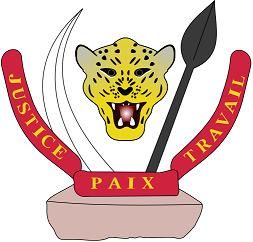Democratic Republic of Congo National Progamme of Action (NAPA)
Project Overview
National Adaptation Programmes of Action (NAPAs) provide a process for Least Developed Countries (LDCs) to identify priority activities that respond to their immediate needs to adapt to climate change, ultimately leading to the implementation of projects aimed at reducing the economic and social costs of climate change.
Key Vulnerabilities identified in the Democratic Republic of Congo's National Progamme of Action (NAPA):
- Water Resources
- Coastal Area
- Health
- Agriculture
- Land and Ecosystem Degradation
Project Details
The Democratic Republic of Congo is in the process of implementing the United Nations Framework Agreement on Climate change. Within the framework of its Initial National Communication, it has undertaken studies on the country’s vulnerability and adaptation strategy in priority areas such as water resources, agriculture and coastline. The country’s objective in terms of water resources is mainly to ensure correct water supply to the populations of major urban centres such as Kinshasa, Lubumbashi and Kananga. The water catchment, production and distribution infrastructure will therefore have to be rehabilitated and/or developed. In the agricultural area, the major challenge is for DRC to ensure food security in the long term despite changing weather conditions.
The Democratic Republic of Congo is mostly land-locked, with only a minor km-long coastline along the Atlantic Ocean; it is limited to the west by the Kabinda District of Angola and the Republic of Congo, to the north, by the Central African Republic and Sudan, to the east, by Uganda, Rwanda, Burundi and Tanzania, and to the south, by Zambia and Angola. It extends over a total area of about 2,350,000 square km. In Africa, only Sudan and Algeria have a larger territory than DRC. DRC’s territory stretches between Latitude 5°30' North and Latitude 13°50' South and one-third of the country area is located north of the Equator. DRC offers an exceptionally great diversity of biomes, ecosystems, habitats including notably dry rainforests or Muhulu, open woodland forests or Miombo, the full savannah range as well as cloud and gallery forests. A vast network of protected areas representing about 8% of the national territory preserve this variety of ecosystems.
The country’s landscape is dominated by the world’s second largest area of tropical rainforest—which stores 8 per cent of global forest carbon—as well as mountainous terraces, plateaus, savannahs, grasslands and mountains. Although incredibly rich in natural resources such as timber, energy, minerals and gemstones, the DRC is presently ranked 168 out of 169 on the UNDP’s Human Development Index. DRC is one of the most populated countries in Africa with an estimated population of 52,100,000 inhabitants in 1999 growing at a rate of about 3%. Worsening socio-economic conditions, political instability and civil war have contributed to increased migration from the rural areas towards the cities. About 70 per cent of the economy is informal, and dominated by rural sectors; industrial development remains embryonic.
Per capita GDP in 2008 was US$182. There is an enormous legacy of conflict in the country due to the Second Congo War (1998 to 2003). Insecurity persists in the east of the country and continues to cause the loss of human life and limit development efforts. Substantial environmental damage and degradation has been one of many results of the country’s past and present conflicts.
Key Results and Outputs
Key Vulnerabilities
- Water Resources
- Coastal Area
- Health
- Agriculture
- Land and Ecosystem Degradation
Potential Adaptation Measures
Water Resources
- Evaluation and monitoring of the water resources, particularly those of the River Congo system and its tributaries.
- Evaluation of the impact of this system on the quantity and quality of underground water.
- The characterization and development of the watersheds identified in the city of Kinshasa for control of the surface run‐off.
- The protection of the water resources against pollution.
- Recourse to adaptation infrastructures capable of supporting the projected hydrological variations, and the economic, social and ecological costs of the adopted measures.
- The establishment of communities on the Kinshasa hill areas, after development, and on the BatÈkÈ Plateau in order to protect them from the injurious effects of floods.
Coastal Area
- Regulation of mangrove development
- Coastal Area Development Policy
- Delineation of building and residential areas
- Diversification of activities and rationalization of farmers/fishemen
Health
- Reinforcement of the medical personnelís professional capacities,
- Identification and destruction of the pathogensí hideouts,
- Organisation of preventive actions against vectorial diseases,
- Reinforcement of the cleansing system,
- Organisation of the population's education and training, and the raising of its awareness,
- Improvement of the food supply system.
- Popularisation of the use of anti-mosquito grids,
- Use of impregnated window screen,
- Eradication of mosquito deposits,
- Mosquito eradication on a national scale
- Reinforcement of the populationís nutritional capacities,
- The fight against social exclusion and community promotion
- Mapping of the habitat areas at climatic risk
Agriculture
- Use short‐cycle varieties, maize, rice and beans in particular
- Develop livestock breeding
- Upgrade alternative crops (peanuts and beans)
- Reinforce soil conservation activities
- Build reservoirs and water retention ponds
- Develop intensive livestock breeding
- Integrated crop protection
Land and Ecosystem Degradation
- Develop reforestation and soil conservation programmes
- Development of more efficient agro-sylvo pastoral management methods
- Promotion of renewable energies and domestic fuels as substitution for ligneous fuels
- Participative and community management of natural resources by the civil society and the rural communities


